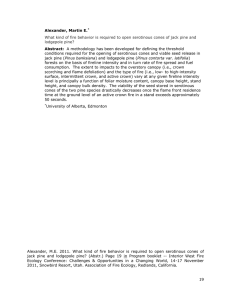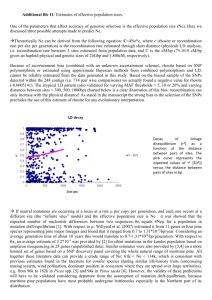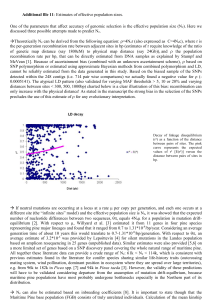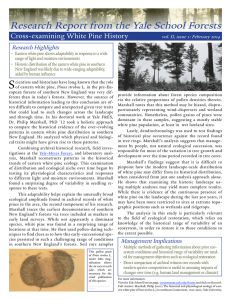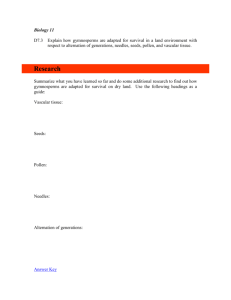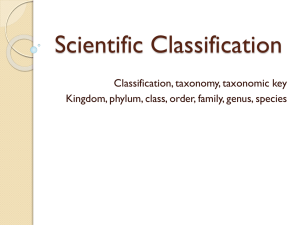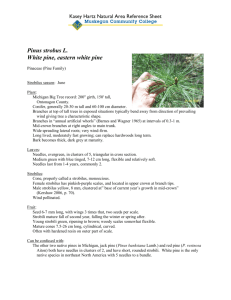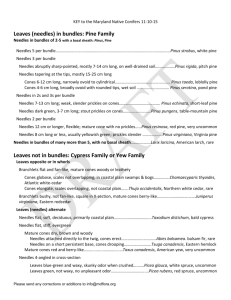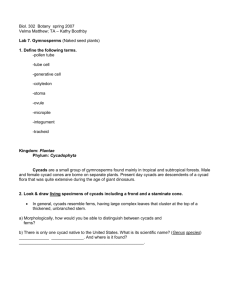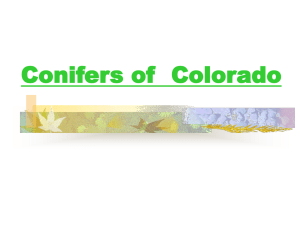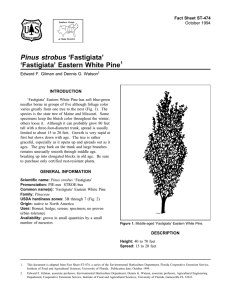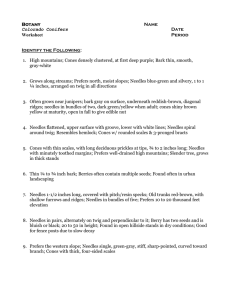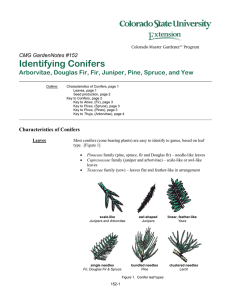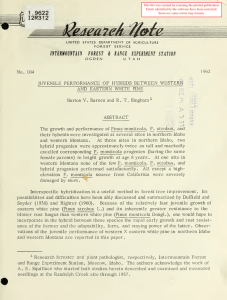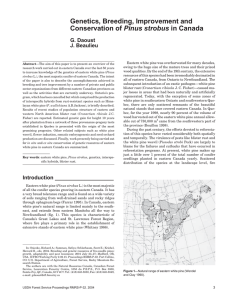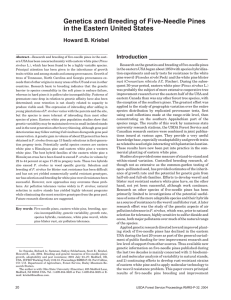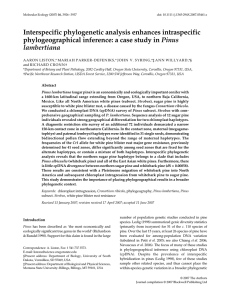Indicator Species Fact Sheet Eastern White Pine, Pinus strobus
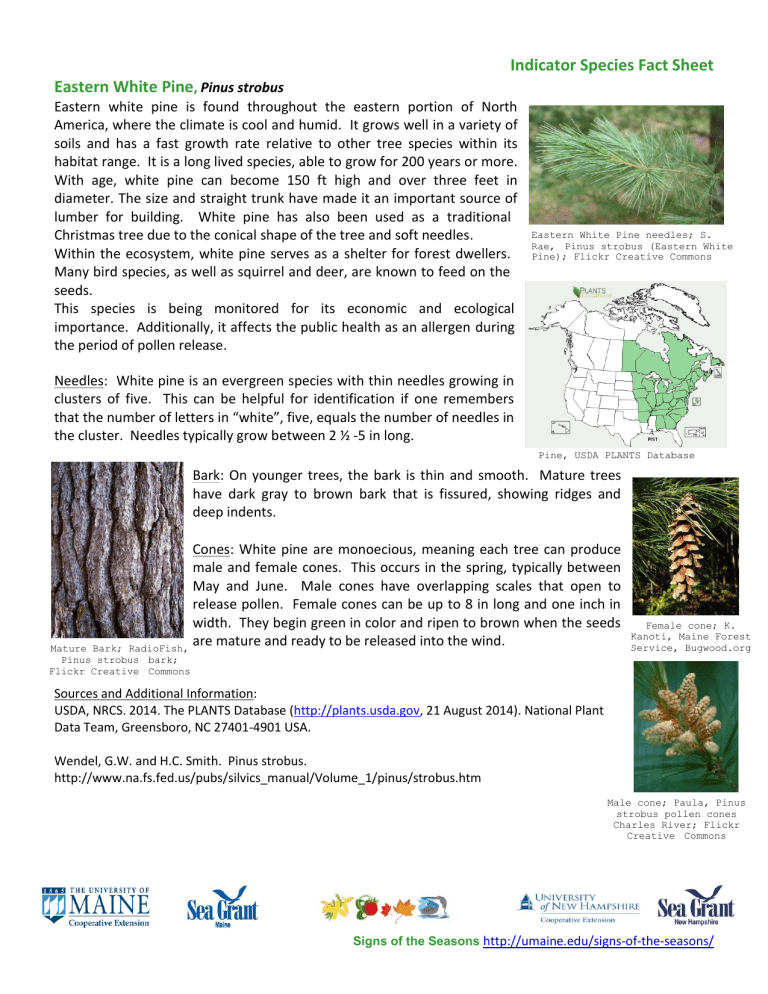
Indicator Species Fact Sheet
Eastern White Pine
, Pinus strobus
Eastern white pine is found throughout the eastern portion of North
America, where the climate is cool and humid. It grows well in a variety of soils and has a fast growth rate relative to other tree species within its habitat range. It is a long lived species, able to grow for 200 years or more.
With age, white pine can become 150 ft high and over three feet in diameter. The size and straight trunk have made it an important source of lumber for building. White pine has also been used as a traditional
Christmas tree due to the conical shape of the tree and soft needles.
Within the ecosystem, white pine serves as a shelter for forest dwellers.
Many bird species, as well as squirrel and deer, are known to feed on the
Eastern White Pine needles; S.
Rae, Pinus strobus (Eastern White
Pine); Flickr Creative Commons seeds.
This species is being monitored for its economic and ecological importance. Additionally, it affects the public health as an allergen during the period of pollen release.
Needles: White pine is an evergreen species with thin needles growing in clusters of five. This can be helpful for identification if one remembers that the number of letters in “white”, five, equals the number of needles in the cluster. Needles typically grow between 2 ½ -5 in long.
Distribution of Eastern White
Pine, USDA PLANTS Database
Bark: On younger trees, the bark is thin and smooth. Mature trees have dark gray to brown bark that is fissured, showing ridges and deep indents.
Cones: White pine are monoecious, meaning each tree can produce male and female cones. This occurs in the spring, typically between
May and June. Male cones have overlapping scales that open to release pollen. Female cones can be up to 8 in long and one inch in width. They begin green in color and ripen to brown when the seeds
Mature Bark; RadioFish,
Pinus strobus bark; are mature and ready to be released into the wind.
Flickr Creative Commons
Sources and Additional Information:
Female cone; K.
Kanoti, Maine Forest
Service, Bugwood.org
USDA, NRCS. 2014. The PLANTS Database ( http://plants.usda.gov
, 21 August 2014). National Plant
Data Team, Greensboro, NC 27401-4901 USA.
Wendel, G.W. and H.C. Smith. Pinus strobus. http://www.na.fs.fed.us/pubs/silvics_manual/Volume_1/pinus/strobus.htm
Male cone; Paula, Pinus strobus pollen cones
Charles River; Flickr
Creative Commons
Signs of the Seasons http://umaine.edu/signs-of-the-seasons/

